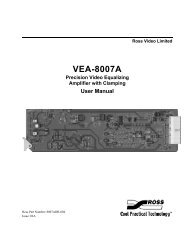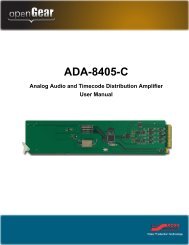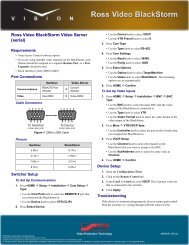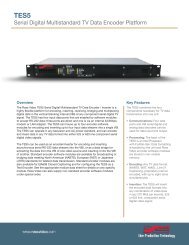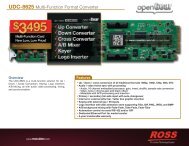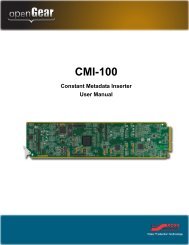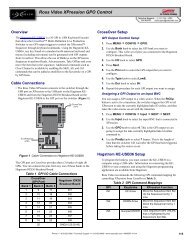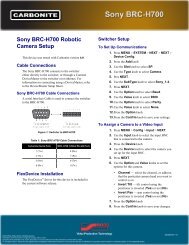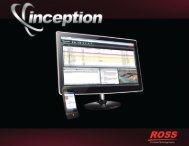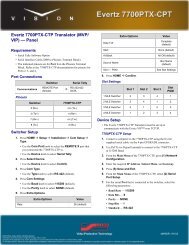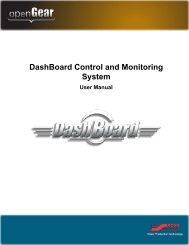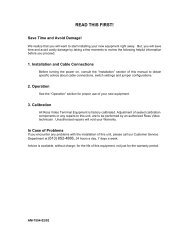CDK-111A-Lite Owner's Guide - Ross Video
CDK-111A-Lite Owner's Guide - Ross Video
CDK-111A-Lite Owner's Guide - Ross Video
- No tags were found...
You also want an ePaper? Increase the reach of your titles
YUMPU automatically turns print PDFs into web optimized ePapers that Google loves.
Transition Mode Command (4A, CA)Function Byte Count EffectsAddressREAD:CommandCodeNext Transition 02 01 4A NoneWRITE:MessageNext Transition 03 01 CA mode byteBit7654321Bit0x x x x x00=KEY not selected01=KEY 1 selected10=KEY 2 selected11=KEY 1 & 2 selectedTransition Mode Byte Format0=BKGD not selected1=BKGD selectedDon't Care BitsAuto Transition Rate Command (AC/7D, CC/FD)The editor uses the read command to determine the currently set auto transition ratefor the type of transition specified in the command. The response from the keyer willbe in the form of the write command, the message bytes having the formats shown inthe figure on the next page.A write command from the editor sets the auto transition frame rate. The rate isspecified in three message bytes; their formats are shown below. Note that the writecommand updates the appropriate auto transition rate display and may or may notinitiate the transition. Each digit of the frame rate is expressed in binary codeddecimal (BCD). The rate message bytes formats are shown below.Rate Byte 1 – contains a transition start control bit and the most significant digit(hundreds digit) of the frame rate.Rate Bytes 2 and 3 – Rate byte 2 contains the next most significant digit (tens digit)of the frame rate. Rate byte 3 contains the least significant digit (units digit) of theframe rate.NoteThe <strong>CDK</strong>-<strong>111A</strong>-<strong>Lite</strong> will treat bits 0 and 1 as interchangeablesince it only has one keyer.The <strong>CDK</strong>-<strong>111A</strong>-<strong>Lite</strong> will ignore bit 2 since it lacks mixcapability.<strong>CDK</strong>-<strong>111A</strong>-<strong>Lite</strong> • Owner’s <strong>Guide</strong> v4B Appendix A. Serial Protocols • 4-17



